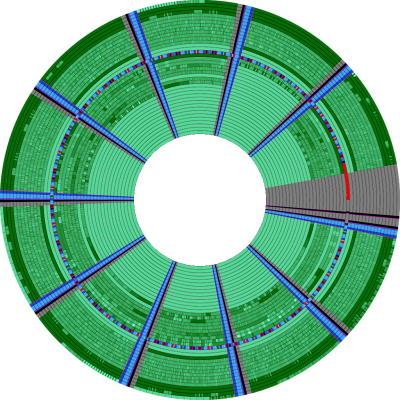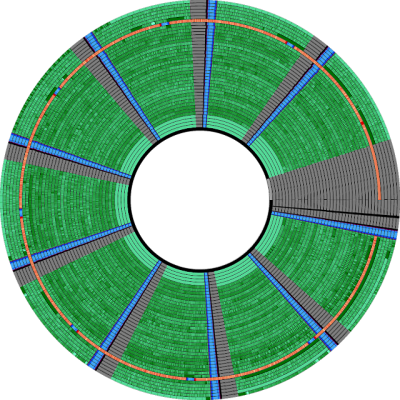Continuing the series on floppy copy protection, [GloriousCow] examines Electronic Arts’ Interlock system. This was used from 1984 to 1987 for at least fourteen titles released on both 5.25″ and 3.5″ floppies. Although not officially advertised, in the duplication mark sector the string ELECTRONIC ARTS IBM INTERLOCK. appears, hence the name. Compared to other copy protection systems like Softguard Superlok this Interlock protection poses a number of somewhat extreme measures to enforce the copy protection.

Other than the typical issues that come with copying so-called ‘booter’ floppies that do not use DOS but boot directly into the game, the protection track with Interlock is rather easy to spot, as seen on the right. It’s the track that lights up like a Christmas tree with meta data, consisting out of non-consecutive sector IDs. Of note is the use of ‘deleted’ sector data marks (DDAM), which is a rarity in normal usage. Along with the other peculiarities of this track it requires an exact query-response from the disk to be accepted as genuine, including timings. This meant that trying to boot a straight dump of the magnetic surface and trying to run it in an emulated system failed to work.
Reverse-engineering Interlock starts with the stage 0 bootloader from the first sector, which actually patches the End-of-Track (EOT) table parameter to make the ridiculous number of sectors on the special track work. The bootloader then loads a logo, which is the last thing you’ll see if your copy is imperfect.
Decrypting the second stage bootloader required a bit of disassembly and reverse-engineering, which uncovered some measures against crackers. While the actual process of reverse-engineering and the uncovered details of Interlock are far too complex to summarize here, after many hours and the final victory over the handling of an intentional bad CRC the target game (Murder on the Zinderneuf from 1984) finally loaded in the emulator.
After confirming the process with a few other titles, it seems that Interlock is mostly broken, with the DOS-based title ArcticFox (1987) the last hurdle to clear. We just hope that [GloriousCow] is safe at this point from EA’s tame lawyers.
Interested in more copy protection deep dives? Check out the work [GloriousCow] has already done on investigating Softguard’s Superlok and Formaster’s Copy-Lock.


















